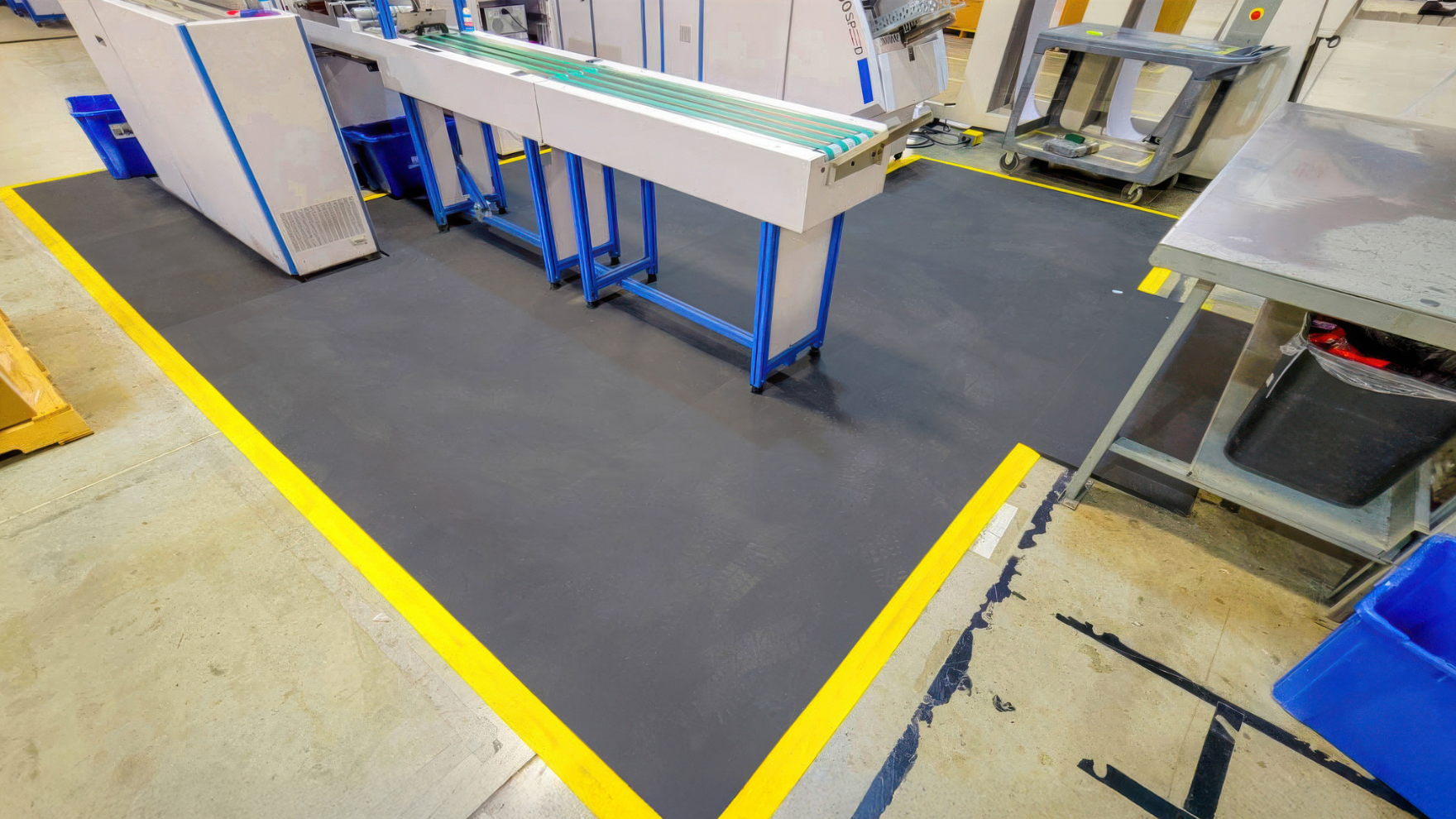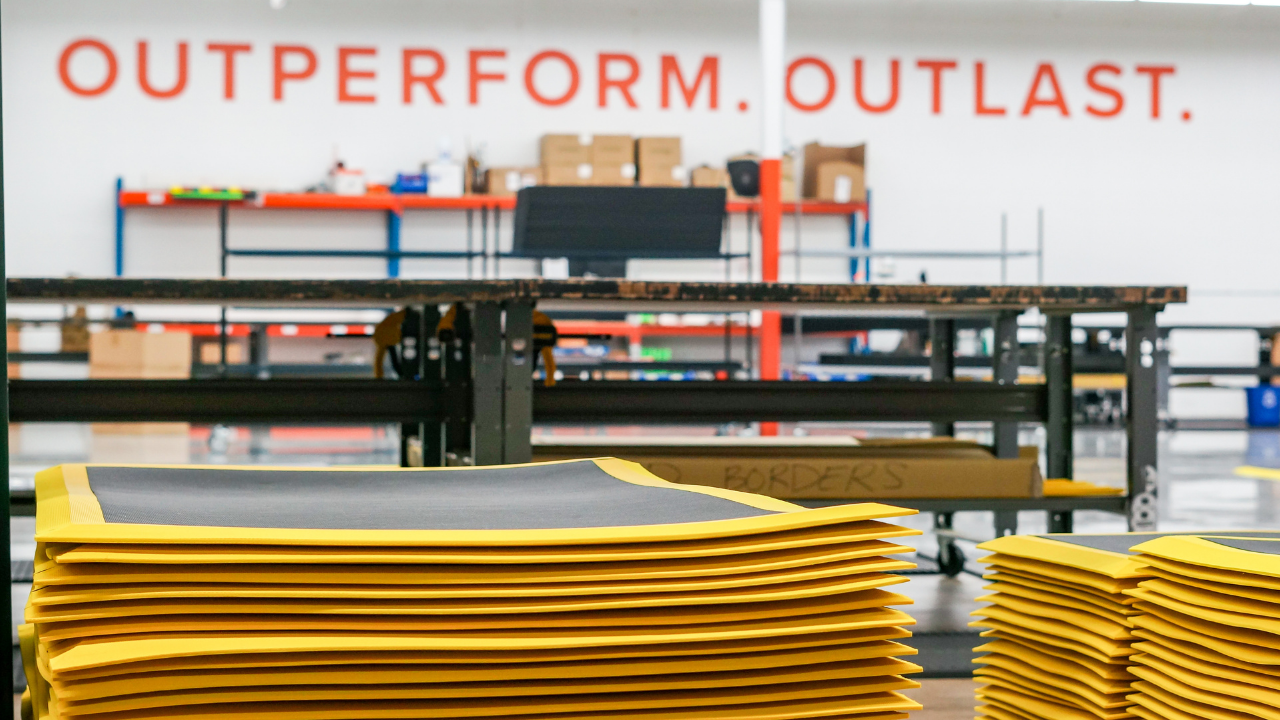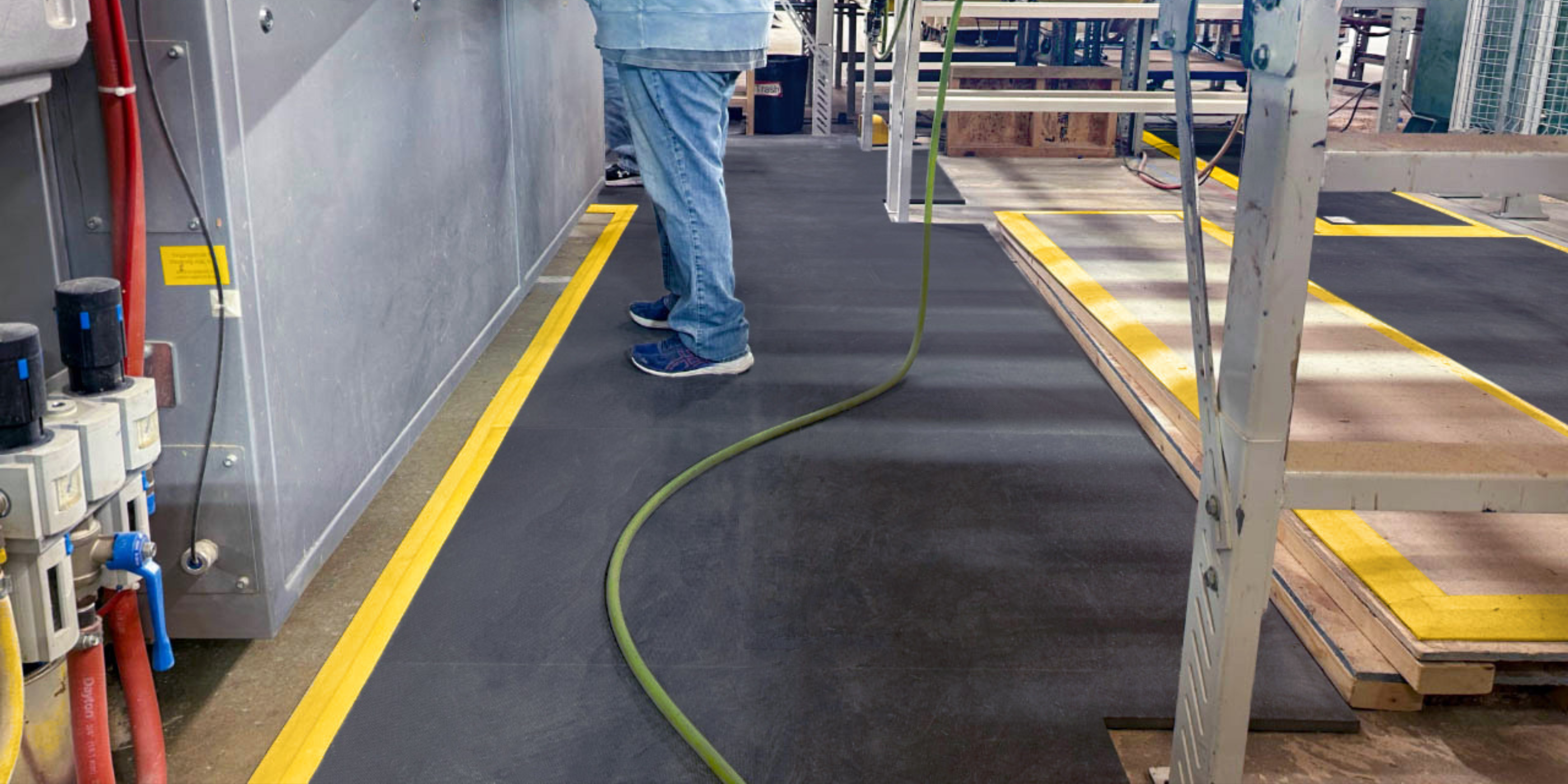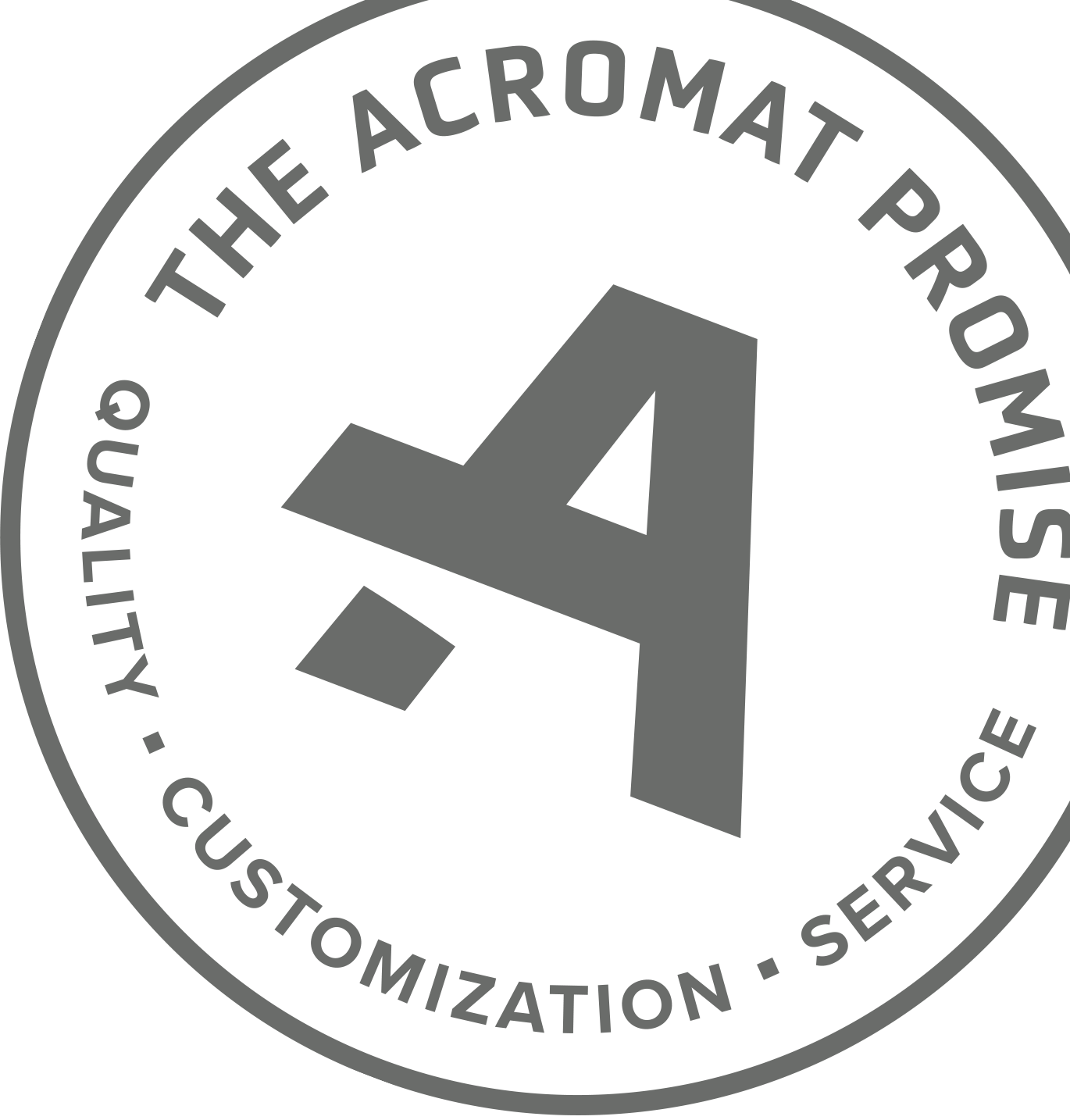The AcroMat 100-1 Series, 100-ESD Series, 100-Cleanroom Series, and NitriTuf Diamond Series anti-fatigue mats are officially National Floor Safety Institute (NFSI) Certified for "High Traction" with a Transitional Coefficient of Friction (TCOF) of 0.76.
According to the NFSI, a 0.60 or greater TCOF rating indicates a high level of slip resistance when wet (bottom in terms of movement, top in terms of traction) and can reduce slip and fall risks by 50%-90% – providing a safer traversal experience.
After sending our anti-fatigue mats through the testing and certification process, we identified 5 ways NFSI Certified mats protect employee health, safety, and your budget:
1. NFSI Certification helps you make informed decisions
NFSI is the leading independent testing agency for anti-fatigue product testing, certification, and standard development. They use an intricate testing system that helps manufacturers like AcroMat learn how our products actually help keep users safe from slips, trips, and falls.
More importantly, the test results provide you with the insight you need to make confident buying decisions. Specifically, the NFSI testing system provides mats with a Transitional Coefficient of Friction (TCOF) rating:
- Lower than 0.4 – Low traction / higher probability of slipping
- Between 0.4 and 0.6 – Moderate traction / average probability of slipping
- Greater than 0.6 – High traction / low probability of slipping
According to the NFSI, mats in the "low traction" category are more prone to movement. Mats in the "high-traction" category – 0.6 or greater – have proven to reduce slips, trips, and falls; they are more likely to remain in place when met with liquids and will not absorb liquids which helps the mats maintain their traction.
The AcroMat 100-1, 100-ESD, 100-Cleanroom, and NitriTuf Diamond Series anti-fatigue mats all earned a grade of 0.76 of higher – the very top end of the "high traction" (0.6+) category.

Independently tested and certified, the AcroMat 100-1 Series (top left), 100-Cleanroom Series (top right), NitriTuf Diamond Series (bottom left), and 100-ESD Series (bottom right) anti-fatigue mats are officially NFSI Certified for "High Traction."
2. NFSI Certification provides transparency
NFSI has a comprehensive public database of every anti-fatigue mat and flooring product that have earned "high traction" certification. If the ergo mats you're considering are certified, you will find them in the NFSI database.
View Database: NFSI Certified Anti-Fatigue Mats
As an example of the importance, a large aerospace manufacturing client of ours doesn’t allow safety and production leaders to invest in anti-fatigue mats that aren’t NFSI “High Traction” Certified and publicly represented in this database.
If the mats you’re considering aren’t in here, they either haven’t been submitted for testing or failed the testing process. In such instances, we recommend asking your provider directly. It's important to leave no stone unturned when gearing up for an investment in matting.
 NFSI "High Traction" Certified NitriTuf Diamond Series mat for a leading windows manufacturer; custom cutout navigates around lift table, built-in cable covers ensure smooth and flat surface, and AcroMat's exclusive design promises the borders will never curl.
NFSI "High Traction" Certified NitriTuf Diamond Series mat for a leading windows manufacturer; custom cutout navigates around lift table, built-in cable covers ensure smooth and flat surface, and AcroMat's exclusive design promises the borders will never curl.
3. NFSI Certification gives you control
Mat providers can fill product pages with whatever they want. Truthfully, we're all biased. We all think our anti-fatigue mats are the best on the market. By offering up mats for testing, anti-fatigue mat providers put the outcome of their mats in the hands of a third party.
Independent testing from a third party provides critical objectivity. It also gives you more control over the decision-making process. Instead of purely making decisions based on biased product pages, certification ensures official and independent testing results.
Note from Russell Kendzior, President, National Floor Safety Institute:
“The AcroMat 100-1 Series, 100-ESD Series, 100-Cleanroom Series, and NitriTuf Diamond Series anti-fatigue mats were tested per the NFSI 101-C Test Method for Measuring Dry Transitional Coefficient of Friction (TCOF) of Floor Mat Backing Materials on November 13, 2023, and passed the standards ‘High-Traction’ requirement."
4. NFSI Certification helps you build the business case
If you've found the right mat but are having trouble getting approval, which will resonate more with your leadership team?
- "We think the mat will provide slip resistance in our oily environment."
- "The mat is NFSI Certified for 'high traction' in wet/oily environments."
Nokian Tyres uses the AcroMat 100-1 Series and NitriTuf Diamond Series mats. In this video case study, EHS Specialist Amanda Eskew takes viewers inside the Nokian Tyres facility to share how their mats have remained in place after 18 months of 24/7 use.
5. NFSI Certification protects your budget
Safety is about making sure your employee go home from work each day as safe and healthy as when they arrive. This protects their well-being, your culture, and also your budget and bottom line.
According to NFSI, floor surfaces with a 0.6 TCOF or greater level of slip resistance when wet reduces wet-slip risks by upwards of 50-90%. The AcroMat anti-fatigue mats all graded higher than 0.75 TCOF.
By investing in mats that have proven to reduce a highly common workplace injury risk, independently tested and certified, you can have confidence they are providing the protections you need and your people deserve.
Main Takeaway
Testing and certification provides an added layer of confidence, knowing you're making an investment that has proven to perform before you spend a dime. While NFSI Certification shouldn't be the sole decides when exploring your anti-fatigue mat options, it does empower you to make more informed and unbiased decisions.




